


Well, they say a picture is worth a thousand words, so why not show you some of Japan through some eye-opening digital photographs? Some may delight, some may amuse, and some may shock you. But I'd thought I'd share some interesting displays that are special in Japan.



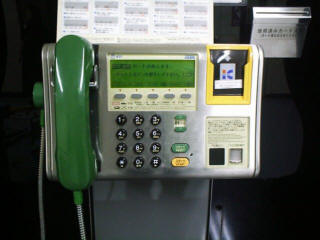
One of a countries most distinctive features is in its pay phones. They're not seen in any other nation the same way, and since if you come here you'll almost certainly be using them, here they are! Note that there are 2 of them--the neon-green is the older type and the drab gray one the newer type. Both are still found all over Japan, but eventually the green ones will disappear.
So how are they different? Well, the biggest differences are that the green phones are for domestic calls only (unless you use a separate company's calling card or sign up to be able to call internationally). Some of the gray phones are only for domestic calls like the green one, but others allow direct international calls also. (You'd be an idiot to use the Japanese international telecoms though, with their outrageous prices and constant telemarketing harassment -- use Skype, a prepaid card service, or sign up with a callback company!!) See the gold bars around the gray phone's LED display? That shows you it's able to place international calls also.
Both phones let you pay by either using 10 yen, 100 yen, or a thin magnetic telephone card. Nearly any convenience store, kiosk, and many phone booths have vending machines for phone cards. There is a 500 yen type (50 ten-yen units) or a 1000 yen type with 105 ten-yen units. They are not refundable, and phones do not give change for unused portions of 100 yen coins. If you do place an international call, you can use only 100 yen coins or the cards. Since certain youths who're fed up with Japanese prices for international calls found a way to recycle spent cards, the gray phones on city streets have been changed to only accept 100 yen coins for such calls. Another difference is that the gray phones have both an analog and digital phone jack you can connect a laptop or palmtop to for sending data, a fax etc. There are also a few variations of the green phone, and older bulkier type as well as a smaller, phone-card only type.
The 3rd phone there is just beginning to appear around the country and uses a new phone card, the IC card. This is not compatible with the other phones. Eventually these will replace the others, and their cards use an IC that slowly burns itself out. You can insert up to 2 cards into the phone and the card with less remaining units will be used first.
If you look around enough, you might just find the REALLY old rotary dial types as well.
One other difference nobody tells you about -- the gray phones may not work well if you're calling your own answering machine to see if you have any messages. For many phones, the machine answers one ring later if there are no messages, to save you from wasting money to find out if someone left you a message or not. But with the gray phones there is some delay, so when you hear the 3rd ring it's really the 4th, with the phone machine answering and then telling you there are no messages. If this happens to you, try sticking with the green phones.
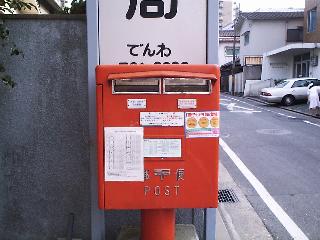
Here's another special part of Japan--like their phones, their mailboxes are quite distinct. Originally they were modelled after those in Great Britain. The one in this photo is typical of those used today though. The blue slot on the left is for regular domestic mail; all other mail goes in the right red slot. Delivery times are posted on the side. Note also the open sewers on the right--during the summer they will take your breath away.

Here's something you don't exactly see running around your neighborhood. Want a pizza for dinner or that ball game on tonight? You'll find many pizza delivery services, as well as more Japanese versions of ramen, okonomiyaki (a fried Japanese pizza), etc. Since Japanese streets are routinely a moving parking lot, you'll almost certainly see them deliver your food in these cheaper, (lower-taxed) mobile 50cc engine bikes. If you move into an apartment or house it won't be long before you see some menus pop up in your mailbox. Unlike in the U.S., there is no tipping of the delivery boys, waitresses, maids, etc. And after seeing their prices, you won't feel much like it, anyway.
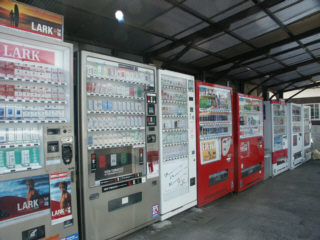

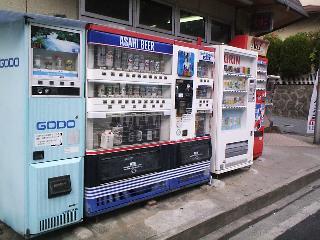
Vending machines for everything.....In Japan the 24 hour convenience store is still relatively new--but even if you're in the boondocks you won't need to worry. You'll find vending machines like these here selling everything. And I do mean everything. Liquor, cancer sticks, rice, condoms, girlie magazines, comics, etc. etc. The Asahi machine seen here not only sells regular cans, but 633ml and 2 liter bottles also. The vending machines for soft drinks not only sell cold drinks but hot canned coffee in the winter as well. According to the Japan Vending Machine Manufacturers' Association, in Japan there is one vending machine for every 24 persons. The latest thing? Asahi Soft Drinks is setting up over 10,000 vending machines across Japan to offer free wi-fi access.


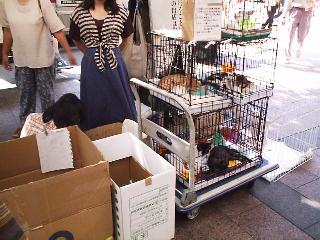
If you're one of those who's been lulled into thinking Japan is one big La-La Land, maybe these will wake you up. Here, extremely few people bother to spay their pets. The result? You guessed it--the killing of countless animals each year because the owners either kick the new offspring into the street or give them to the city to be destroyed. And worst of all, it is a slaughter that is COMPLETELY UNNECESSARY. Everyone marvels at the "Tamagochi", or the robot dog just invented, but few ever understand WHY they are popular in the first place. For most people, owning a pet is virtually a luxury -- and if you live in a condo or apartment you probably aren't even allowed anything besides a plant or a goldfish. In these photos, you can see a few cats who have nowhere to go except the streets; in the other you can see some women who deserve some award but won't get any. But there they are, on a busy street every day, trying to give away any impounded pet they can before its time is up. For nearly all of these unwanted pets, it's really a Death Row. The moral of the story is, if you have a pet, NEUTER IT ALREADY!!

Here's something else you can do in Japan that you can't in other countries. Why does this industry thrive? Well, in part because Japanese radio and TV broadcasts are so dismal. Rarely is a song played in its entirety -- instead you have blabbering, chattering DJs who like to hear the sound of their own voices. Prices for renting CDs are not too different from a DVD. Until a few years ago, you could rent a new CD just as it was released, just like movies. But then came the greedy, whining US record companies who stammered and hollared about lost profits (we all gotta help those record execs buy their 3rd Mercedes). So the Japanese gave in partially and made a new law that would keep new CDs out of the rental shops until they were at least a year old. For films and famous TV shows, nearly all big names from the US and Europe are here in Japan, but sorely delayed. In most cases, if it's coming out on DVD in the US then it's just starting its theatrical run in Japan--so if you're coming to stay a while in Japan, see everything you want to before you come.
This is something the guided tours and Japan National Tourist Organization
leave out of their recommended places to
visit, but you can see a lot about Japan by looking at its cemetaries.
Because of the price of land, partial cremation is the norm. It's a
far cry from the endless green hills and quiet
lawns of those in the US and Canada -- here you'll find people's homes right next door.
What they think of that is hard to tell; at least the
people have quiet neighbors....
If none of these pics have provoked a response from you, this one surely
will. Your first question will probably be, "How the
hell does this thing work?!?". What, you've never gone camping before? Think
of it as a hole in the ground that flushes, and
you'll get the idea. As far as "Culture Shock" goes, this one might hit you
right at home, so to speak. If you live in Japan,
sooner or later you'll have to deal with one of these. And when you go looking
for a place to live, most older buildings (where
the rent is cheaper) will have Japanese style toilets. If you just can't deal
with this though, many new apartment houses are
equipped with the western-style, and if you're out on the town, most of the
newer department stores as well as the ritzy tourist
hotels have at least one western style facility.
What's this? A Stalinesque Japanese prison? A bombed out remnant from the
war for world peace? Nope--it's a Japanese
public university--and it's very much in use. You might be surprised at the
grungy, drab, delapitated-looking buildings they
actually use for classrooms at public schools. All they'd need is a few
(dozen) coats of paint to look a lot better. But spending
for such things in Japan is always at the backburner--yet giving massive
chunks of pork to bloated construction companies
or subsidies to inefficent farmers never goes away (and guess who has the
political clout). In stark contrast, buildings at
private universities look a whole lot better. You'd think with all the
earthquakes in Japan these public school buildings would
have come down long ago. But there's always hope for the next big
shaker.......
When you come to Japan, you won't be able to help but notice certain hotels
decked out in glittery neon and flashing
lights. What are these places, anyway?? Welcome to the Love Hotel. That's what
the Japanese call them, anyway (rabu
hoteru), and "rabu" is a common euphemism for sex. Here you can choose a room
with various themes, and rent the room
for a few hours or for a full night. In the photo above the Japanese have
taken the Statue of Liberty and turned it into a
Statue of License. What about the so-called "family values" crowd harping
about morality? Hey, the mindset here is if you're
old enough to pay, you're old enough to play.
But you should look on these as more than just a curiousity--if you're
looking for a place to stay, you might just consider
staying in one (even if you're alone). They're far cheaper than other hotels,
they're easy to find, and staying in one is an
experience, to say the least. In most cases, you'll find clusters of them
wherever young people congregate or at major highway
exits. Exact numbers are unknown, but some estimates say there are up to about
30,000 love hotels in Japan. Average revenue for city hotels are about 400,000 yen per room a month in the annual 4 trillion yen industry.
In the 3rd picture above, you'll find three pay scales. The top is the
full night rate, the middle price is for a "Rest" (Read: 1-2 hours
of lust and passion), and the bottom, called "No Time Service" is for
off-hours, usually weekday afternoons. It may be tough to find an
open room on weekend nights. Prices in Tokyo are around US$30 for the "rest",
and US$80 a night--but may be higher for fancier hotels
and cheaper for suburbs, highway exits and secluded areas. One caveat--once
you go in, you can't leave until you pay--and then
you can't come back in unless you want to pay all over again. Food and drinks
are also in the rooms, but
very expensive--if you choose this option, bring some food or drinks with you
before you go in.
One of the first things that will certainly strike you if you come to
Japan is the glittery, neon lights of the big cities. You'll
immediately feel yourself swallowed up by lots of lights, moving and dancing
signs, many of which have become near icons
of the cities they're in. Other Asian cities have the same atmosphere, but
actually being able to read many the signs is one thing
special to Japan. The photo here is of the red light district called Nakasu,
in Fukuoka City. It is puny compared to that of
Shinjuku and Shibuya in Tokyo, or Dotonbori in Osaka. But it has a charm
unique to itself, and this still pic can't come close
to grasping the real atmosphere of the area. You'll find all the sparkles you
could ever want, and the cheesey, sex-for-sale
elements too side by side. Many of the customers here are middle-aged
businessmen, entertaining customers on the company
credit line. But with the economic slump in Japan, this is one area that's
taking a beating.
"Beggars are not unusual in the wealthy societies of Europe and North
America--many American cities, like New York, even
run shelter systems--but in Japan there are no beggars. They do not
exist." --- EPA bureaucrat Taichi Sakaiwa, in his book _What is
Japan?_, 1993, pp.6
"There is essentially no poverty in Japan." --- Eamonn Fingleton,
Japan Revisionist extraodinaire, in his book _Blindside: Why Japan Is Still On Track to Overtake the U.S. by the Year 2000_, 1995, pp.65 (Well, another revisionist
prediction bites the dust...)
While it may be said that there are far fewer homeless and beggars in Japan,
they DO in fact exist, and with Japan's comatose
economy the numbers are growing annually. Just look in any urban train station
at night. That said, at least in Japan there are no
pushy, in-your-face pan-handlers who think you OWE them your spare change.
Still, to have such nonsense pushed onto the West
and then carried by the die-hard Japan groupies who take any slighty
negative comment on Japan to mean you're a "racist",
a "basher", a whining malcontent etc. is the biggest lie of all. As said,
Japan's quasi-socialist system of employment keeps an
unemployment rate lower than most advanced western countries (with consumers
paying for it, of course), but this underclass does
exist and once you fall in it's almost impossible to climb your way out. With
the tradition of the multi-generation family in one home eroding, record bankruptcies
and business related suicides,
as well as industrial restructuring requiring the sacking of the corporate
deadwood (madogiwazoku) and the absence of any
effective welfare system, this is a growing problem Japan is going to have to deal
with. (BBC RealAudio Report Here) The flipside of westernization........
I've only seen this once in over 10 years here, but I really want to share
these with you. Not much I can say about such a gift from God,
except thanks for being healthy and being able to witness such beauty.
Click here for Quicktime Video
Walking past one of these pachinko parlors, you can't help but feel like
you're inside the pachinko machine. Pachinko isn't
pinball exactly, it's putting balls in holes, getting more balls, and
hopefully winning enough to get some money at the end, i.e.
gambling. Pachinko is also one of the "three pillars" of Japanese
life -- drinking, smoking, and gambling -- and usually 2 of them are
being done simultaneously. Don't be surprised if you see clouds of smoke
pouring out of the place and you can't see the machine
in front of you.... So can you win? You bet -- skill is a big part of the game.
And the swirling, sparkling lights and animation of the
building as well as on the machines themselves are a special, unique sight of
Japan. You couldn't avoid these places if you tried, so
by all means go in one and look around!
Nobody seems to know WHY people in Japan always do fireworks in the
summertime, and who cares anyway? Here are a few pics
of some nice explosions over out heads....there are usually several fireworks
festivals in populated areas during the summer, and it's
one of the few times you can see some Japanese girls wear their cute
yukata, which are light summer kimono. Many
fireworks festivals are close to the O-Bon Festival, which is the Japanese
festival of the Dead (it's anything but somber though).
Expect to see crowds as dense as a Tokyo morning train at these fireworks
events!! You can also buy small fireworks in stores
during the summer (and only the summer--buy some for New Year's if you're not
going anywhere for the holidays).
Despite the higher costs of living in the big city, there is one advantage
over being in some tiny village in the mountains--a few restaurants
to chase the homesick blues away. Here are some pics of a few of them; there
are far more in Tokyo and Osaka, including Dennys, Tony Roma's, Shakey's,
TGIF, and some others. What Japan really lacks though are good Mexican restaurants or
Taco Bells, a complaint heard far and wide among long-term ex-pats going through taco
withdrawl. These eateries are no cure though--when the check arrives and you find it
costs 2 to 4 times the price back home, you might feel a bit relunctant to
make going there a weekly habit.
The kogyaru, or little girl look, is truly one of the most famous images in Japan, and this
photo illustrates the most famous attributes -- the cell phone and the "loose socks". Some
in Tokyo are more extreme with darkened faces and white make-up.
These girls are the trendsetters of the nation, as well as perhaps the future saviors
of the economy with Japan's declining birthrate and fewer people to fill those career
roles traditionally reserved for men only. The kogyaru image is also revered among
middle-aged men watching the remainder of their youthful looks slip away, plus
feeling unfufilled in life after cramming all day long for university entrance exams in
their school days and then slaving away for years in a company after that.
For these girls today having the newest and cutest phones is the in thing, and
with stiffling school rules dictating every aspect of their school lives, the bizarre
looking socks, though not as much as before, are still trendy. Perhaps because it is about as
far as the girls can go in school to be more individual yet not break the regulations. There is often
such a friction between Japan's conformity-or-else rules and young people longing
for a breath of fresh air.
"Bon Voyage - Watch Out For Aids"
This message of love from the Japanese Ministry of Health & Welfare was in front
of the airport departure gates. It's aimed squarely at Japanese businessmen going
abroad. Meanwhile, the same Japanese government only recently relented after 30 years
of obstructionism in preventing the sale of the Pill for birth control. The reason for
the ban? To help prevent Japanese promiscuity and the spread of AIDS.
With every square foot of land at a premium, having an American style car wash is
just not worth it. Hence you have the Japanese version, where the car wash moves
and the car is stationary.
At the larger train stations and shopping squares, you will often find young people
passing out freebies to all passers-by, usually small packets of tissues with an
ad in them, but also product samples and new goods that just hit the store shelves.
Especially in the summertime with the crushing humidity, having some tissues in
your pocket to wipe your brow is indeed a welcome thing.
Little items and ads for bars in the red light district are also passed around nowadays,
and these 2 ladies in the photo are most likely here for that.
While it was normal 10 years ago to pass out everything to everyone, with the economy in
a coma now some people won't bother offering tissues to foreigners.
While you won't find the bargain priced huge fountain drinks like in Canada and the U.S.,
many convenience stores in Japan do offer some very nice services, as shown in these
boards outside each store. In this board, the store shows you can pay bills for owning a
television (which many people ignore), phone bills from NTT, electric bills, and motor bike
insurance. You can also send parcels to people through private companies called
takyubin, as well as D.P.E. which means developing your camera film. The bottom two
show they sell liquor and cigarettes as well. The services at convenience stores, or konbini,
as they're called, can vary wildly, however. It takes miles of red tape to get anything done in
Japan, but the bureaucracy to get a liquor license is truly monumental. Many of the stores
that sell liquor bought out some previous mom-and-pop liquor store who cashed in their
chips. Stores like 7-11s and some Lawson's also have ATMs where you can get yen from your card at
a much more favorable exchange rate than cash (check the back of your card to make sure it's in a
participating network - it probably is). Be aware though your bank may have a nominal usage charge and a
foreign exchange charge if you use it. If you live in the sticks
though with long distances between everything, stores like this
can be a godsend.
In Japan, the distance you ride determines how much you will pay. When you board the
bus, you take a ticket with a number on it. As the bus rolls you can look at a board by
the driver and see what your fare will be. You then drop the fare in the machine by the driver
when you exit. You can also easily get change for 1000 yen bills, 500 and 100 yen coins from
the same machine.
Distance also determines your train fare, unless you ride on a JR Rail Pass, which you
must buy before going to Japan (regional passes can be bought within Japan, however). The photo aboves shows the older types of
bullet trains (shinkansen) and the video has the newest (Nozomi). The Rail Pass cannot be used for
the Nozomi Shinkansen, which goes a bit faster and saves about 30 minutes going from Tokyo to Osaka.
One important factor about Japanese food is not only its taste, but its artistic preparation as
well. And extending from that are these plastic replicas of Japanese dishes at the front of the
restaurant to show how delicious they'll be. Even glasses of beer with foam look so real you
have to squint at the detail to tell them apart from the real deal. Not all restaurants show
these, but many do and they offer you one useful feature -- if you can't read the menu, just
take the waitress outside and point at what you want. And if you are in Tokyo, you can go to
Kappabashi (between Ueno and Asakusa, closest from the Ginza
Line's Tawaramachi Station) which is a street
with numerous stores selling restaurant equipment, and actually buy some plastic sushi or other
"sanpuru" (from the word "sample") as they're called. Be aware though that most stores are closed on
Sundays.
The small police box, or koban, is one more element that stands out in Japan.
If you ever need a cop, you might find a couple walk or bicycle over to you from one
of these neighborhood stations instead of waiting for 45 minutes for a cop to drive
over from downtown. The one in the photo prominantly displays what it is but many
koban are little more than a drab old shack with a red light at the entrance.
All across the country on telephone poles, train station walls, buses, and school bulletin boards,
you can catch a glimpse of some of the underside of a society. Unreadable by the tourists
walking past though, there they are, each with a story the fluffy tourist guides avoid.
Upper left: Under the Influence - A warning about drunk driving, as that
area is well known for several drunk driving accidents.
Upper right: Claiming Your Territory - A warning to curb
your dog....unfortunately, it's quite easy to see why there are a lot of signs like this.
Mid-left: Gotta Park Somewhere - A sign by a train station not to park your bicycle there.
But since the cops don't feel like doing anything to a locked bike, it's almost always ignored.
Mid-right: Wild, Wild Life - A warning about boarding a plane and 1) using a cell phone,
2) smoking, 3) getting drunk, and 4) raising hell while on board.
Lower Left: Chikan - The Subway Groper - Every schoolgirl and woman in Japan knows about the groper
on crowded trains, ready to stick his hand up a skirt when trains and subways are packed. Many women
passively take it instead of raise a noise and be embarassed in front of everyone. The poster shows it's
illegal, but it's still a daily occurrence in the land of crime-free harmony.
Lower right: Happy Fines For Happy People With Happy Problems - This cheerful sign is for all the
chain-smoking drug addicts on airplanes who try to sneak a cancer stick in the lavatory,
neurotics glued to their cell phones, as well as anyone obstructing the crew. Since 2004 you now get a
stiff fine.
Another facet of Japan is that there are all kinds of discount stores, and each seems to have its own
little jingle going off in the store, played ad nauseum all day long. Some are more quaint and others will
just make you queasy. Below are a few samples, the first is perhaps the most musical for a store, Don-Quijote,
which sells various goods including liquor at suprisingly refreshing prices, but their song sounds more
like "Donkey Hotei". There is also an English version that is nearly unintelligible. You'll hear these a lot
especially among the electronics retailers.
One example is for a discount electronics seller, Bic-Camera, a great place to go shopping, by the way. Another
is for Yodobashi camera, which rips off American folk songs and changes the lyrics.
And
if there ever is a Fingernails-on-the-Chalkboard Award, it would have to go to the third example, Yamada Denki.
Imagine working there with this song repeated every 2 minutes....after about 2 weeks you'd seriously
want to go out and hurt someone. After 3 weeks, you'd probably want to go out and hurt yourself....
The Don-Quijote Song
One thing that you can see all over Japan is the mother taking the kids to school or
back home -- not many soccer moms driving gas-chugging SUV's here. Parking is often tough
even in the suburbs and gas prices compared to the US or Canada will make your eyes fall out.
The term "mama-chari" comes from mama for mother, and "chari", a contraction of "charinko", which
is Japanese slang for bicycle (jitensha). Technically it may be illegal to carry your kids around
this way, but it is still a common sight and a way to get around and burn some calories as well.
The Japanese tend to be quite a superstitious lot, and on some street corners after the shops
have closed (usually 8 PM) you can sometimes see these older women ready to look at your hands and
tell you your "future" -- for a small price of course. You'd be amazed at how many highly educated in
Japan have been trained to be completely intellectual, yet put full faith in the wildest superstitions you can
imagine -- of course, they still think all old western superstitions are just rubbish. Perhaps the biggest
old wive's tale Japanese go for, which makes any interest in horoscopes elsewhere look tame, is that your
blood type determines your personality. Japanese doctors laugh their heads off when you mention this to
them, but it's yet another belief in putting form over substance.
Here is something you don't see wherever you come from -- and don't see much in the rest of Japan either.
This was a small concert of Okinawan musicians singing a traditional folk song -- not in Okinawa, but
on one of Japan's main islands in front of a department store. The dewey-eyed Japan newcomer might wax poetic
about how deep Japan's culture is; how wonderful they still celebrate their ancient heritage. But the real reason
they're doing it is to drum up some tourism for Okinawa -- any they can scrape up. Okinawa is one of the poorest
regions of Japan, and without tourism the whole place would be doomed. With the Japanese economy still floundering,
the impact has been all that much harder.
You don't see these frequently these days (fortunately), but after a late night working or
partying, or when doing something that requires some quiet, it can be rather jarring to suddenly have
these shrill noises thrown at you with nothing you can do about them. The first is a quaint throwback going back
several decades of trucks selling roasted sweet potatoes and going around neighborhoods looking for
any house dwellers to emerge to buy them. There used to be others decades ago selling other items like tofu but
the Yaki Imo truck is basically the last one left. The 2nd and 3rd items are frequently heard more than seen
when an official is politicking, or in an election season with a candidate renting a sound truck
and blasting speeches out at high volumes
to the mostly indifferent public. One would think for a developed country the nation's airwaves would
be more effective...but this relic is still around. Plus the government stranglehold and red tape to make a new
TV or radio station is staggering, so the number of stations available is small. Reactionaries
support these noise machines, as it is about the only method
to (force everyone to) hear their views. Liberals support them for human rights reasons as they still
remember the fascist military state which controlled all speech before World War 2. Both of these are
nothing though compared to the ultranationalists (uyoku) which drive around in dark trucks blasting
out tirades at eardrum busting volumes, as well as motorcycle punks (bosozoku) who rip off motorcycles
and go out joyriding in gangs at night while revving the engines at jet engine levels.
The kaiten sushi restaurant is another novelty in Japan that is quite unique. Preparers make
various sushi dishes, which then go round and round a conveyor belt until someone takes what they
like. They are usually not expensive and worth trying out once just for the experience. Newer places
actually have dishes with microchips that automatically calculate your bill when you take a dish.
Also look at
and
Unless you've grown up in a similar megalopolis like Shanghai, Mexico City, or Sao Paulo, even if you're from the big city
you're likely to be stunned by the tidal waves of people that are pouring out of the train stations and down the Tokyo streets.
For those that have lived every day of their lives in it, they are mostly used to it and don't think much of it. But even
Japanese from other parts of Japan are overwhelmed by the sheer number of people crowding the busy streets. Looking
at how many sardines are stuffed into a can is nothing compared to seeing the crowds crammed into a subway or train
car in the mornings.
These scenes are from some of the busier districts in Tokyo, namely Shibuya and Shinjuku -- and are not even that busy
compared to other times of day like the height of rush hour. It should be remembered though that Japan is not
all Tokyo and Tokyo is not all Japan.
To see the page of photos of Japanese holidays, click
Or go to The Japan FAQ: Know
Before You Go
Or you can see these other pages in The Japan FAQ Go to The Nonprofits
to donate free food and help to the needy.

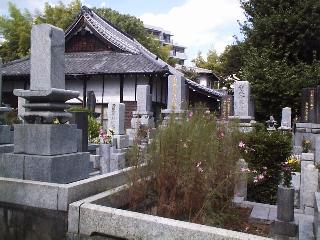
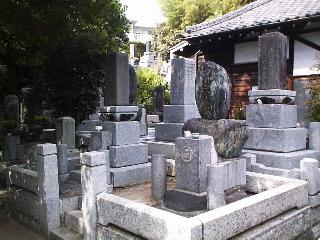
7. "The Facilities"

8. The Gulag?


9. The Love Hotel
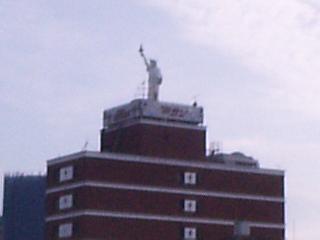
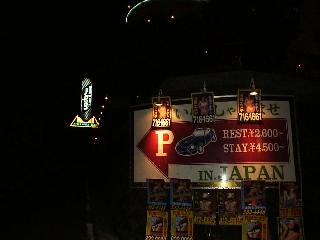
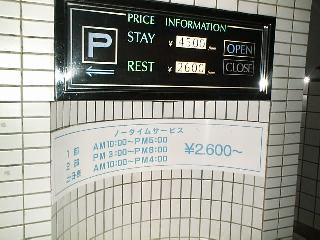
10. Neon City
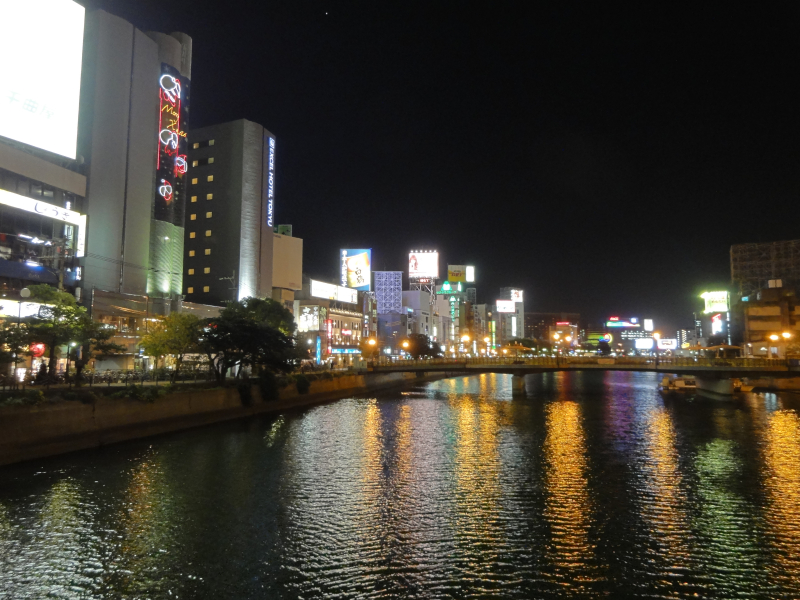
11. Blatant Lies
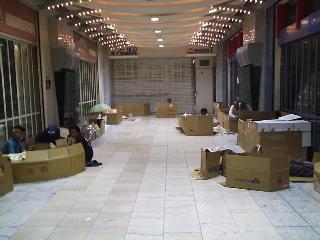
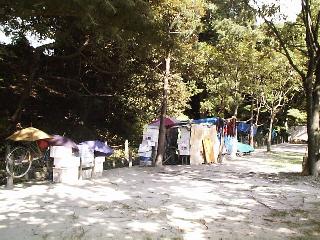
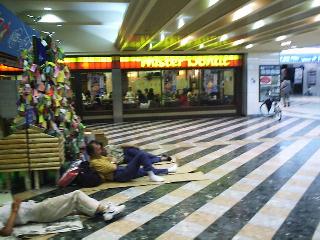
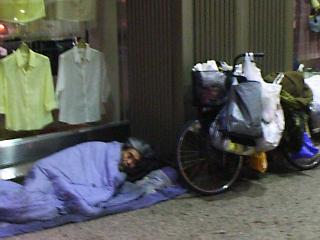
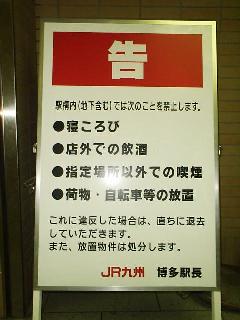
Photos: Upper Left--Another cardboard city springs up in "poverty-free" Japan.
I guess only one is really homeless and the other 999 are all anthropology field researchers...
Upper Right--A long vacation in a city park. Mid-Left--Lots of happy campers in front
of a Mr. Donut, while the customers enjoy the view. Mid-Right--An eager customer
waits for the ladies apparel shop to open in the morning. Lower-Left--A sign (completely ignored)
forbidding sleeping, drinking, smoking, or leaving your stuff or bikes around.
Violators face arrest and their things being trashed. Of course, when you have nothing,
you have nothing to lose either...
12. Beyond Description
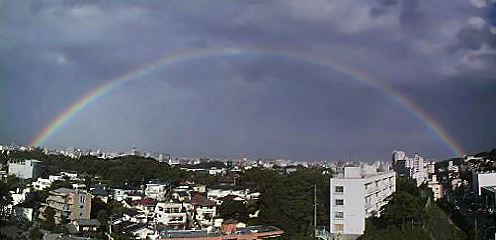
13. Do You Feel Lucky?........Well, DO YA, PUNK?!?
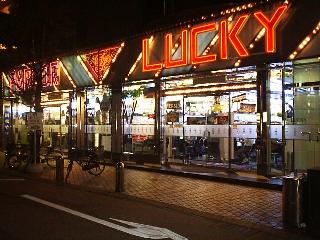
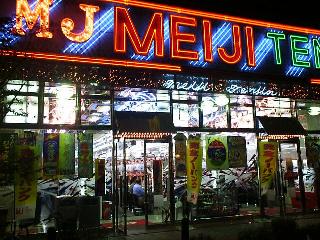

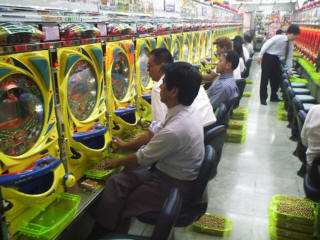
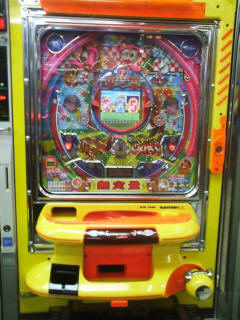
14. Hanabi--Flower Fire
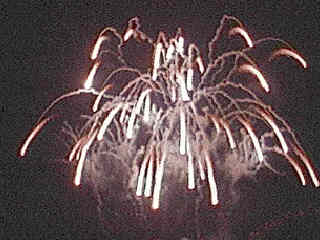


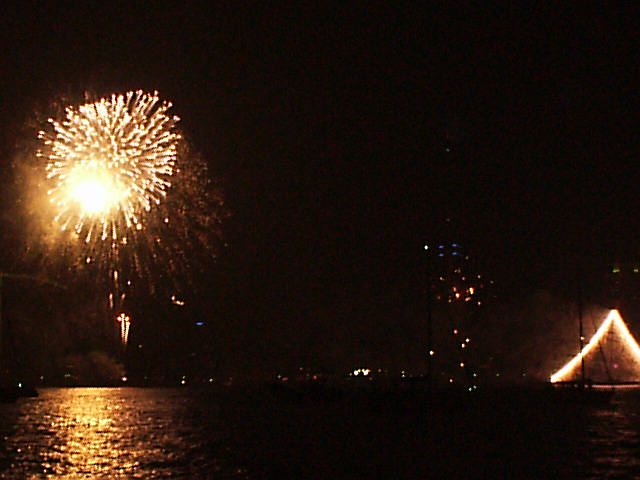
15. Homesick?


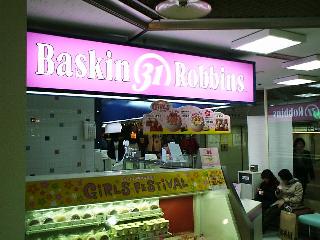



The Kogyaru
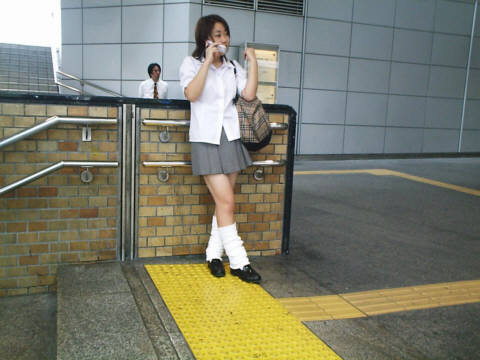
16. Safe Sex Japan Style
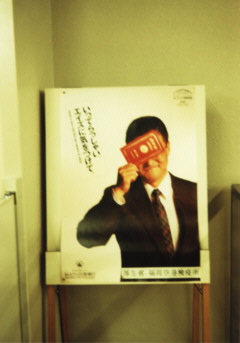

The Japanese Car Wash
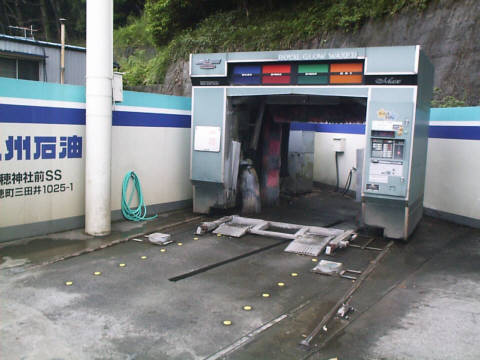
If You Ever Needed Tissues...
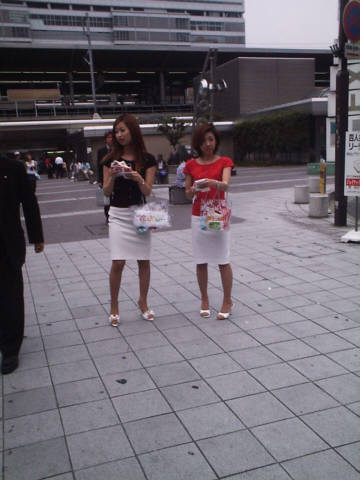
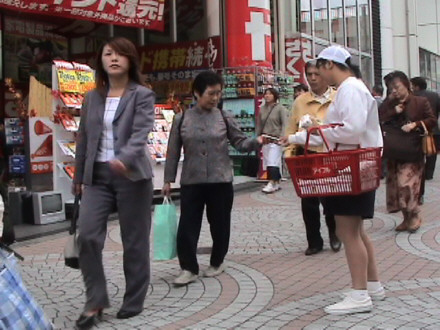
The Convenient Convenience Store
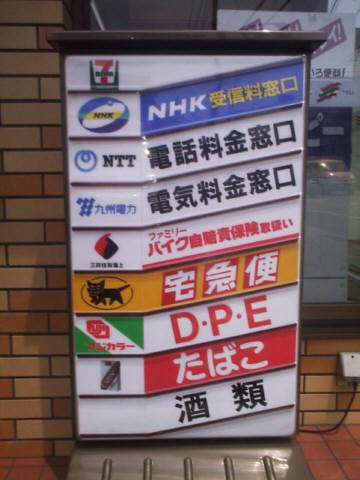
Getting Around

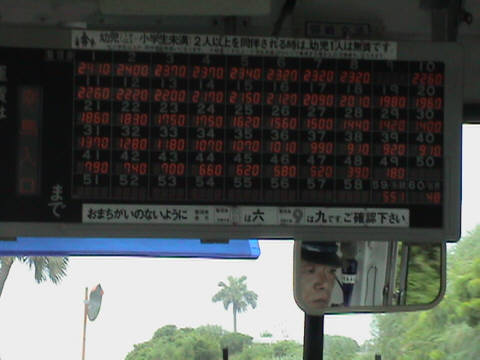
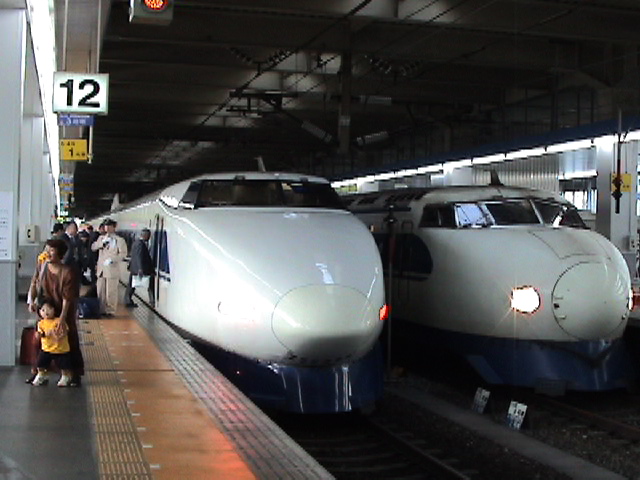
Plastic Food - A Picture is Worth A Thousand Tastes
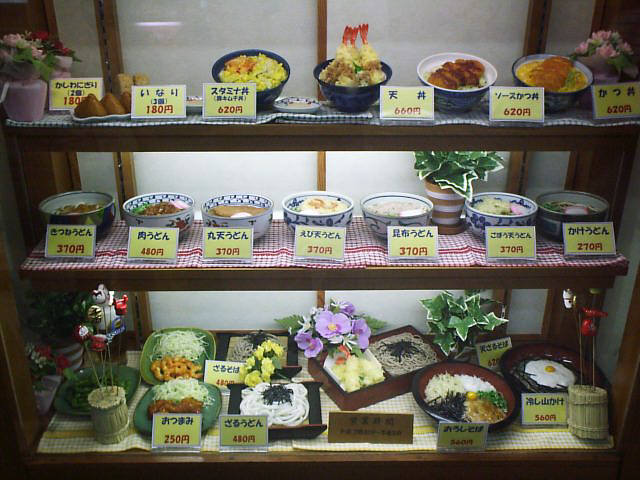
The Police Box
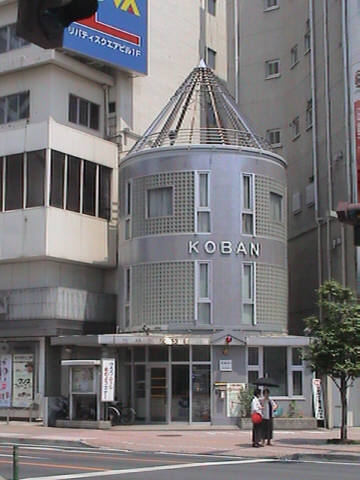
Happiness Is a Well Regulated Society
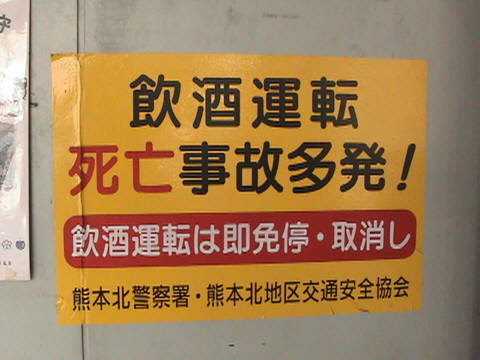

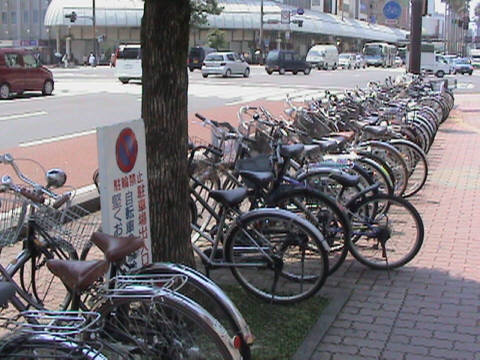
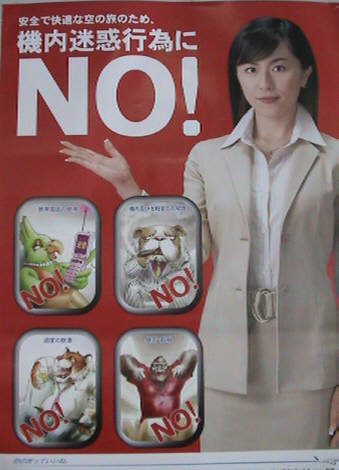
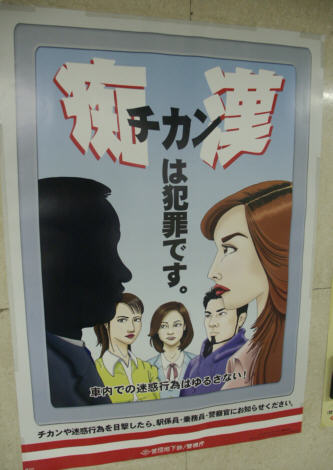
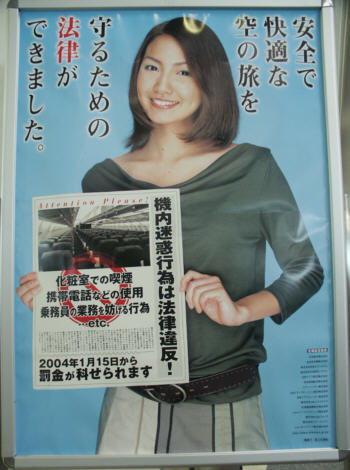
The Discount Store Jingle
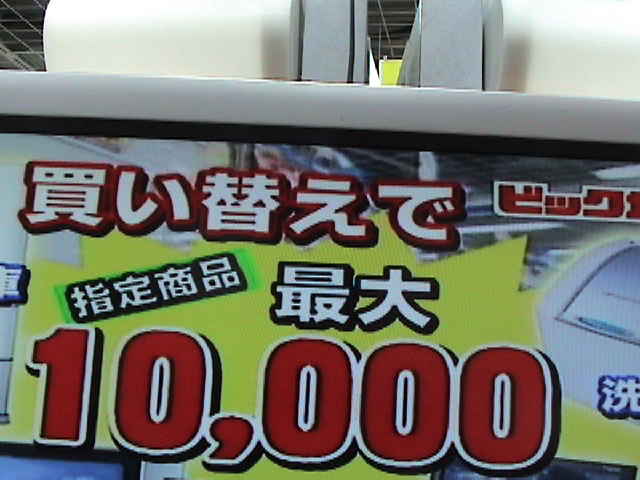
 The Bic-Camera Song
The Bic-Camera Song The Yodobashi Camera Song
The Yodobashi Camera Song
 The Yamada Denki Song
The Yamada Denki Song
The Mama-Chari
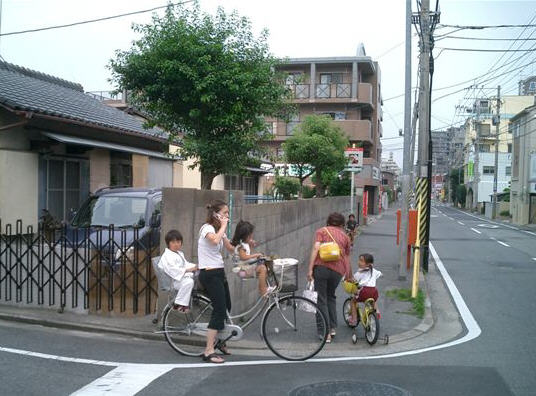
Your Future's In Your Hands
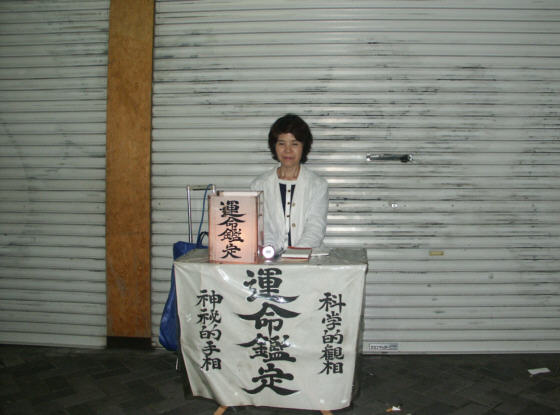
Drumming Up Some Business
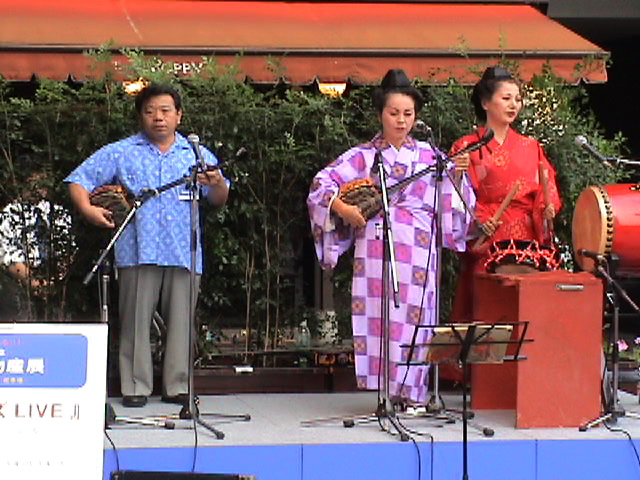
Disturbing the Peace
Kaiten Sushi
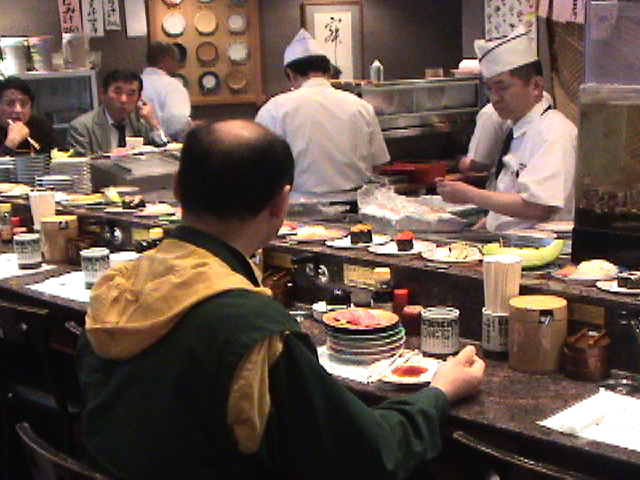
The Sea of People
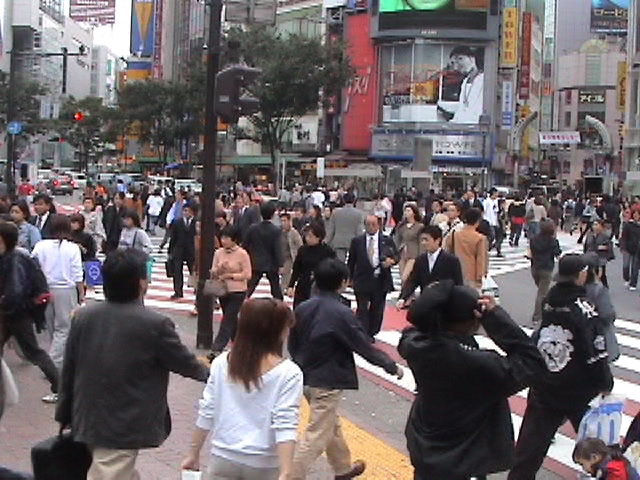
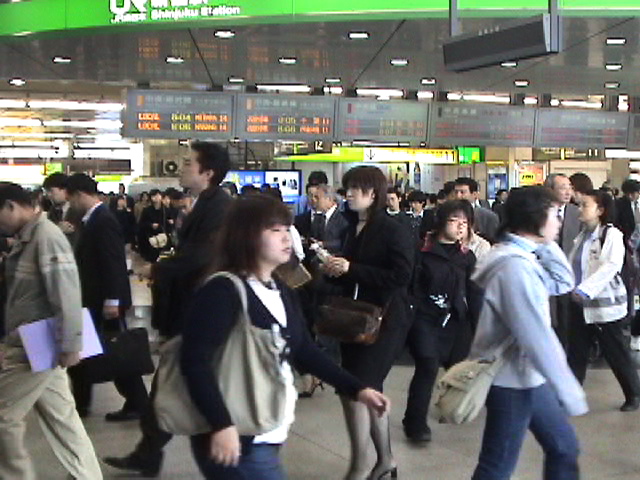



HERE





